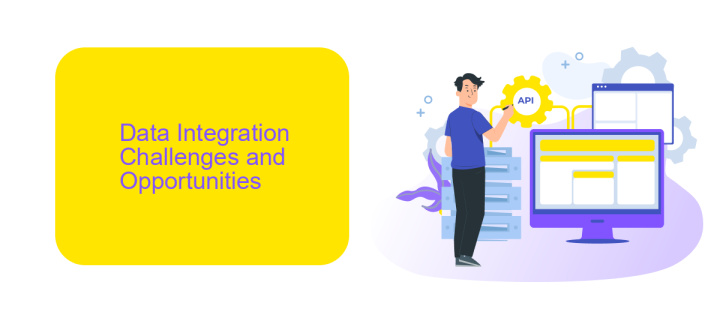Enterprise Data Integration Strategy
In today's data-driven world, an effective Enterprise Data Integration Strategy is crucial for businesses aiming to leverage their data assets for competitive advantage. By seamlessly connecting disparate data sources, organizations can achieve a unified view of their information, enhancing decision-making and operational efficiency. This article explores key components and best practices for developing a robust data integration strategy tailored to your enterprise needs.
Executive Summary
In today's data-driven business environment, an effective Enterprise Data Integration Strategy is crucial for leveraging data across various systems and platforms. This strategy ensures that data is seamlessly integrated, accurate, and readily accessible for decision-making processes. By implementing a robust integration framework, organizations can enhance operational efficiency, improve data quality, and facilitate real-time data sharing.
- Streamlined data workflows across multiple platforms.
- Enhanced data accuracy and consistency.
- Real-time data access and improved decision-making.
- Reduced operational costs and increased efficiency.
- Scalability to accommodate growing data needs.
One effective tool for achieving seamless data integration is ApiX-Drive. This service simplifies the process of connecting various applications and automating data transfers, ensuring that data flows smoothly between systems. By leveraging ApiX-Drive, organizations can minimize manual data handling, reduce errors, and maintain up-to-date information across all platforms. Adopting such advanced integration solutions is essential for staying competitive in a rapidly evolving digital landscape.
Data Integration Challenges and Opportunities

Enterprise data integration presents a range of challenges, including data silos, inconsistent data formats, and real-time data synchronization. Organizations often struggle with integrating disparate systems, resulting in fragmented data that hinders decision-making. Security concerns also arise, as integrating multiple data sources increases the risk of data breaches. Moreover, the complexity of managing large volumes of data can lead to inefficiencies and increased costs.
Despite these challenges, there are significant opportunities for organizations to enhance their data integration strategies. Tools like ApiX-Drive simplify the integration process by providing a user-friendly interface and automated workflows, reducing the need for extensive technical expertise. By leveraging such services, businesses can achieve seamless data flow across various platforms, improving data accuracy and accessibility. This, in turn, enables more informed decision-making, greater operational efficiency, and a competitive edge in the market.
Data Integration Framework

Developing a robust Data Integration Framework is essential for any enterprise aiming to streamline its data processes. This framework serves as the blueprint for how data is collected, transformed, and loaded into various systems, ensuring consistency and reliability.
- Identify data sources and destinations: Understand where your data is coming from and where it needs to go.
- Choose integration tools: Select tools like ApiX-Drive that can automate and simplify the integration process.
- Establish data transformation rules: Define how data should be formatted and cleaned before integration.
- Set up monitoring and governance: Implement mechanisms to monitor data flows and ensure compliance with data governance policies.
- Test and validate: Conduct thorough testing to ensure that the integrated data meets quality and performance standards.
By following these steps, enterprises can create a scalable and efficient Data Integration Framework. Tools like ApiX-Drive can significantly reduce the complexity of integrating various data sources, making the entire process more manageable and less error-prone. This approach not only enhances data quality but also provides a solid foundation for advanced analytics and business intelligence.
Data Governance and Stewardship

Effective data governance and stewardship are crucial components of a successful enterprise data integration strategy. They ensure that data is accurate, consistent, and secure across the organization, enabling better decision-making and compliance with regulatory requirements.
Data governance involves the establishment of policies, procedures, and standards for managing data assets. It defines roles and responsibilities, ensuring accountability and ownership of data management processes. Data stewardship, on the other hand, focuses on the operational aspects, ensuring that data policies are implemented and followed.
- Define clear data ownership and accountability.
- Establish data quality metrics and monitoring processes.
- Implement data security and privacy measures.
- Utilize tools like ApiX-Drive for seamless data integration and automation.
By leveraging robust data governance and stewardship practices, organizations can enhance data integrity and reliability. Tools such as ApiX-Drive can facilitate the integration process, ensuring that data flows smoothly between systems while maintaining high standards of quality and security.


Implementation and Management
Implementing an enterprise data integration strategy requires meticulous planning and execution. First, identify the key data sources and destinations within your organization. This includes databases, cloud services, and third-party applications. Next, define the data flow and transformation rules to ensure consistency and accuracy. Utilizing a robust integration platform like ApiX-Drive can significantly streamline this process. ApiX-Drive offers a user-friendly interface and pre-built connectors, enabling seamless integration without the need for extensive coding skills.
Effective management of the integration strategy is equally crucial. Continuous monitoring and maintenance ensure that data flows remain uninterrupted and accurate. Implement automated alerts and regular audits to identify and rectify any discrepancies promptly. Additionally, maintaining comprehensive documentation of the integration processes and configurations aids in troubleshooting and future updates. Leveraging ApiX-Drive’s monitoring tools can provide real-time insights, helping to maintain the integrity and reliability of your data integration efforts.
FAQ
What is Enterprise Data Integration?
Why is an Enterprise Data Integration Strategy important?
What are the key components of an effective Enterprise Data Integration Strategy?
How can automation help in Enterprise Data Integration?
What are the common challenges in Enterprise Data Integration?
Apix-Drive is a universal tool that will quickly streamline any workflow, freeing you from routine and possible financial losses. Try ApiX-Drive in action and see how useful it is for you personally. In the meantime, when you are setting up connections between systems, think about where you are investing your free time, because now you will have much more of it.

